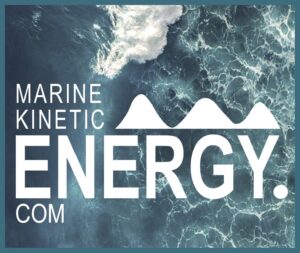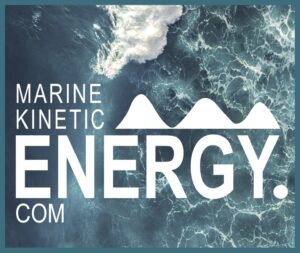Marine energy is a source of renewable energy that we can get from the natural movements of water, including tides, waves, ocean, and river currents. We can also get marine energy from temperature fluctuations in the water by converting energy from oceans to thermal.
How does Marine Energy Works?
Technologies for marine energy harness the kinetic energy from waves or currents, tides, and the thermal energy of deep cold water to convert surface water to produce green power. People are witnessing the use of Marine kinetic energy with every passing day.
For example, some wave energy converters employ buoys to harness energies from the ocean’s horizontal movements, whereas turbines can harness the power of currents and tides.
Marine Hydrokinetic Energy generates two distinct types of energy sources:
- Thermal energy due to the sun’s heat
- Mechanical energy comes from the waves and tides.
Logic Behind the Working
The tides are driven through the pull of gravitation of the moon, while waves are driven chiefly by the wind. The waves and the tides are renewable sources of energy, while the ocean’s thermal energy (from solar energy) is pretty constant. The conversion of electricity from both waves and tidal energy is typically done using mechanical devices.
Wave Energy
Wave Energy Devices that generate power from waves get electricity directly out of the movement of mighty ocean waves or from the pressure fluctuations beneath the surface.
Professionals suggest several techniques to harness sustainable energy services in San Diego, California. There are many ideas to implement this technique on commercial sites. Wave technology can promote electricity for near-shore and offshore areas. It can also cause electricity in 40 meters deep water.
Hydrokinetic Energy
Hydrokinetic Energy is also a desirable energy source because hydrokinetic energy projects do not emit greenhouse gases and have minimal effect on the local environment, dependent on the location.
Additionally, hydrokinetic projects have a less aesthetic and visual impact on the environment than wind turbines. Generally, most mechanical components of various hydrokinetic devices are underwater. But, hydrokinetic generators within non-tidal and tidal rivers could positively or negatively impact marine life.
The marine and hydrokinetic energy that comes from nature energy is typically stable regardless of the weather fluctuations. Many professionals can predict the patterns of the waves in hydrokinetic systems in the ocean accurately days or even weeks ahead of time. The sea’s tides are constantly in flux, at least every 12 hours, due to the moon’s gravitational force.
How To Generate hydrokinetic energy from plants?
Since hydropower relies on water to produce electricity, the plants are typically close to or at the water source. The energy generated by moving water depends on the amount of water’s flow and the elevation change. The more flow and higher the head, the higher the power produced.
Water is pumped through a pipe at the plant level, also known as a penstock. Then, it spins the blades on the turbine. This, then, spins the generator, which in turn generates electricity. The majority of marine and hydrokinetic energy systems facilities operate in this manner, including run-of-the-river systems as well as storage systems that are pumped.
Bottom Line:
In conclusion, we can say that marine kinetic energy services are stable and reliable. The ocean never stops moving and is an excellent part of the renewable energy group. In addition, when the sun goes down and winds slow down at night, and when there are seasonal fluctuations in wind and solar energy, marine energy can be in its most potent form. It can also contribute to sustaining a carbon and pollution-free environment.

